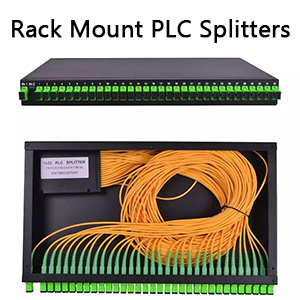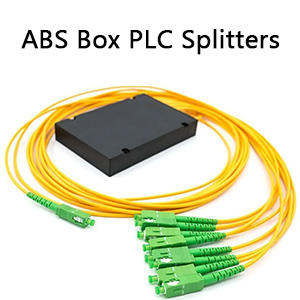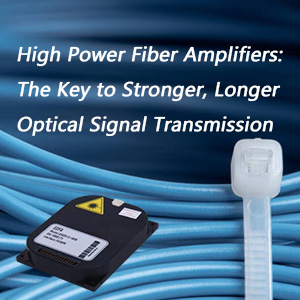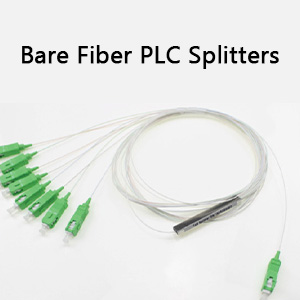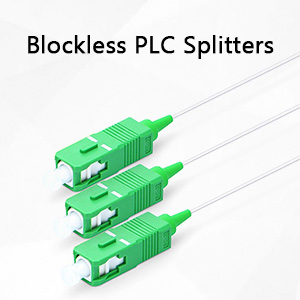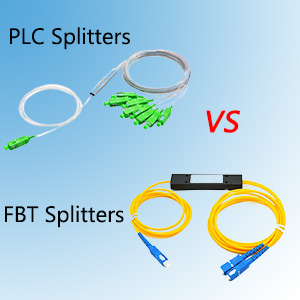Compared with traditional repeaters, optical amplifiers, as important components of optical communication networks, do not need to convert signals into electrical signals, and can directly achieve fast data transmission. The main types are doped fiber amplifiers (EDFA), fiber Raman amplifiers (FRA) and semiconductor optical amplifiers (SOA), which have played a key role in enhancing model strength and expanding network coverage. So Optical Amplifiers PK: EDFA VS SOA VS FRA, friends who are interested in this, let’s take a look below!
Erbium-Doped Fiber Amplifier (EDFA)
The Erbium-Doped Fiber Amplifier (EDFA) is a pivotal component of optical communication systems, playing a fundamental role in signal amplification within the 1550 nm wavelength range. Renowned for its capability to directly amplify optical signals, EDFA achieves this through the stimulated emission of photons within erbium-doped glass fibers. By infusing rare-earth elements such as erbium into the core of optical fibers, EDFA significantly enhances signal intensity without the need for prior electrical conversion. As a result, EDFA functions not only as an amplifier but also as a repeater device, contributing to the efficient transmission of optical signals across communication networks.
- Its core technology lies in erbium-doped fiber (EDF), a type of traditional silica fiber infused with erbium.
- Widely embraced in optical communication systems, EDFA is celebrated for its high gain, wide bandwidth, low noise, and linear amplification capabilities.

Figure 1:Erbium-Doped Fiber Amplifier Operation Diagram
Fiber Raman Amplifier (FRA)
The Fiber Raman Amplifier (FRA) is a widely-used optical amplifier based on Stimulated Raman Scattering (SRS). It boosts optical signals through the Raman effect, transferring power directly to the signal. This nonlinear amplifier comes in two types: lumped (LRA) and distributed (DRA).
- LRAs cover shorter distances, typically up to 10 kilometers, and require higher pump power, typically a few to a dozen watts, to achieve significant gains. They are suitable for amplifying signals that the edfa amplifier struggles with.
- On the contrary, DRAs cover longer distances, often spanning dozens of kilometers, with pump power reduced to hundreds of megawatts. DRAs are commonly integrated into DWDM systems to complement edfa amplifier, improving system performance, reducing nonlinear effects, and enhancing signal quality.

Figure 2:Fiber Raman Amplifier Operation Diagram
Semiconductor Optical Amplifier (SOA)
The Semiconductor Optical Amplifier (SOA) is a device commonly used to amplify optical signals using semiconductor technology. Its operation is quite straightforward: when an electrical current is applied, the semiconductor material becomes activated, thus amplifying the optical signal passing through it. Unlike other optical amplifiers, the SOA doesn’t require an additional pump laser. With its rapid response time and adjustability, the SOA is extensively employed for signal amplification, regeneration, and optical signal processing within optical communication systems.
- SOA amplifier is utilized in the integration of 100G CFP/CFP2 ER4 modules, and light sources operating in the 1.3 μm band are employed for optical communication, facilitating transmissions spanning 40 km between data centers as well as between mobile phone base stations and data centers.
- However, when conducting long-distance transmission, SOAs are essential as pre-amplifiers to counteract signal attenuation in communication light.

Figure 3:Semiconductor Optical Amplifier Operation Diagram
EDFA vs FRA vs SOA
EDFA, FRA, and SOA are three common optical amplifiers, each with distinct roles in signal amplification and network optimization. While they all amplify optical signals, they vary in operational principles and performance. Let’s explore their key differences.
- When comparing EDFA to SOA, EDFA typically exhibits lower noise levels, higher gain, lower polarization dependence, and lower nonlinear effects. Additionally, EDFA usually has a faster response time.
- In contrast to both EDFA and FRA, SOA offers advantages such as fast response times and high integration. Moreover, as an electronic pump amplifier, SOA operates directly by applying current without the need for a separate pump laser. This allows for easy integration of components like semiconductor lasers and modulators, enhancing system flexibility and efficiency.
- Compared to EDFA and SOA, FRA boasts broader bandwidth, lower noise, better dispersion compensation, and greater flexibility, making it suitable for handling multi-wavelength optical signals and long-distance optical communication systems.
Applications of EDFA, FRA, and SOA
EDFA
EDFA is essential for long-distance optical communication, such as undersea cables and terrestrial backbone networks, ensuring signals travel vast distances without significant loss. It also serves as a vital amplifier in WDM systems and optical relay stations, amplifying weakened signals and extending transmission ranges.
FRA
FRA boosts signal quality and extends transmission ranges in broadband optical systems by amplifying signals through the Raman effect. It also enables flexible wavelength allocation and facilitates signal transmission across various bands. Furthermore, FRA assists in dispersion compensation in fiber networks, ensuring signal integrity for dependable long-distance transmission.
SOA
SOA is essential for short-range optical communication systems like MANs and LANs, where it amplifies signals over shorter distances. Its fast response time and integration capabilities make it ideal for various optical signal processing tasks, including optical switches, wavelength conversion, and signal regeneration. Additionally, SOA amplifier plays a vital role in optical packet switching systems, enabling high-speed data switching and routing in next-generation network architectures. Its ability to amplify and process optical packets is instrumental in ensuring efficient data transmission and routing in these advanced network setups.
At Last
When considering the use of fiber trunk cables, you should work with reputable, experienced, and trustworthy manufacturers and suppliers who provide high-quality cables and comply with industry standards is vital.
FiberLife provides Optical Amplifiers, including fiber trunk cable, after proper inspection and testing. With their headquarters in Hong Kong, they work with numerous enterprises in the US and around the globe.
They also SDH EDFA and CATV EDFA. So, get in touch with them and get Optical Amplifiers of the highest quality.

